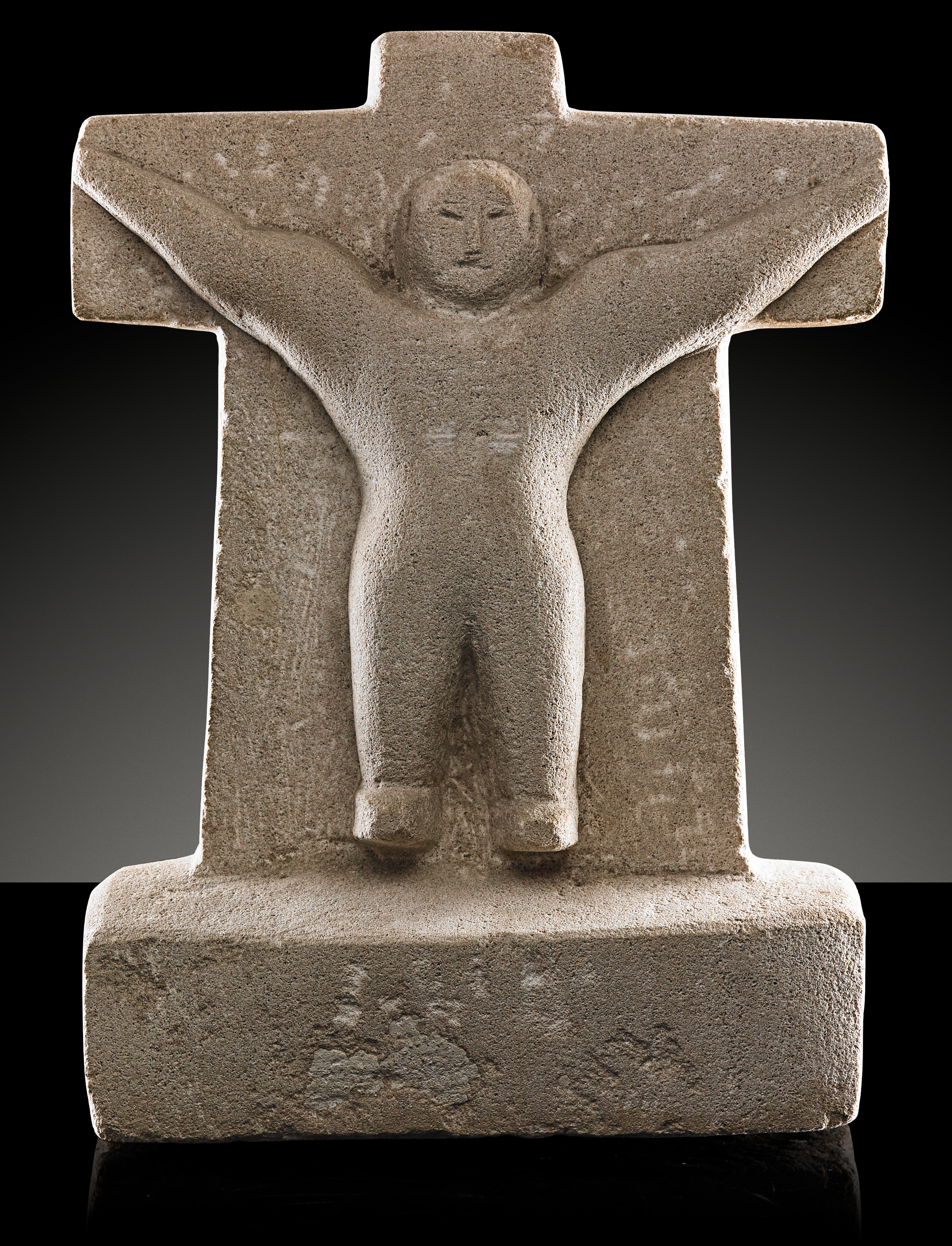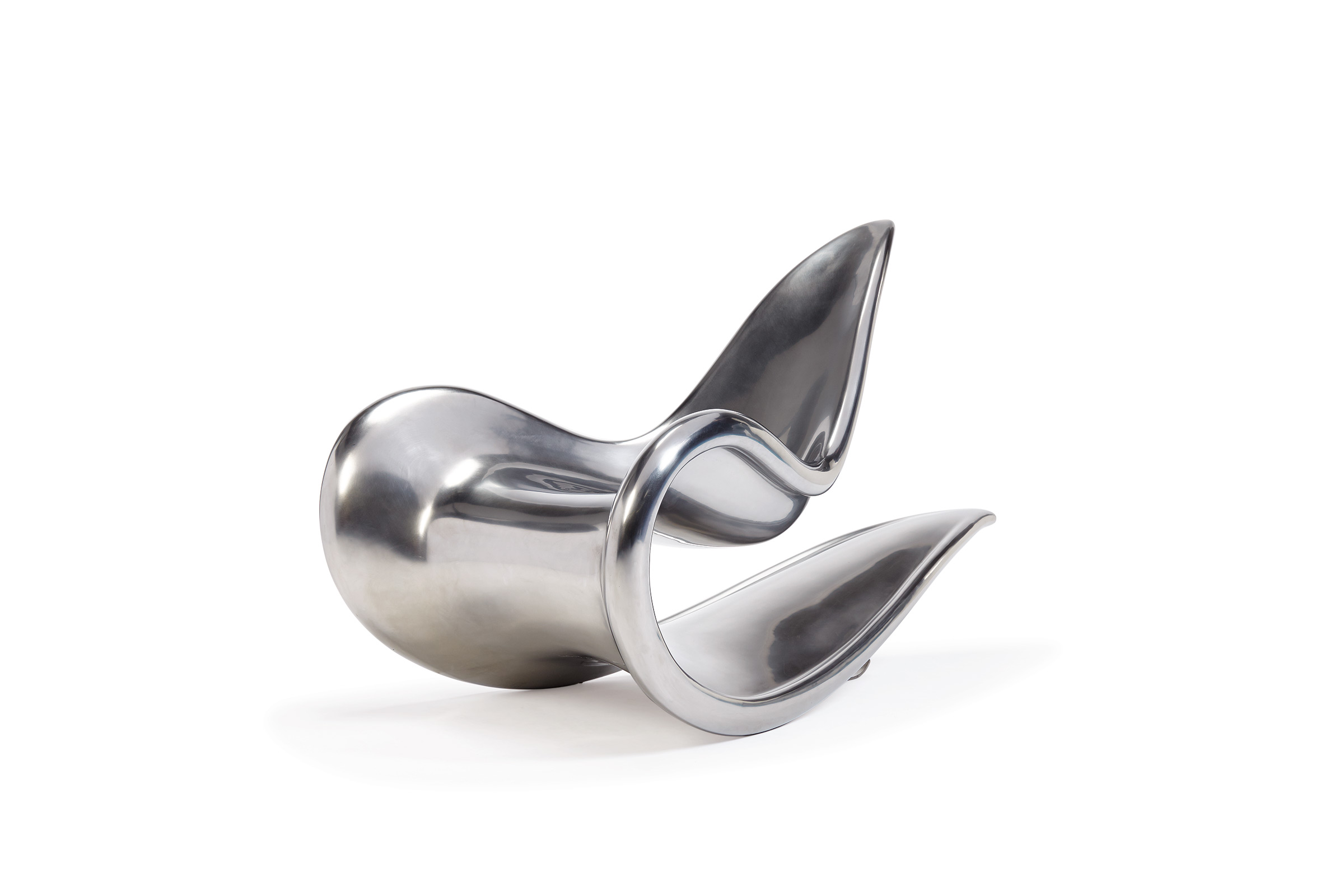Chirp! A Jess Blackstone Robin Carving Sold for… (Scroll Down and See)

Update: The Jess Blackstone robin sold for $584.
What you see: A miniature robin, carved and painted by Jess Blackstone circa 1968 or 1969. Skinner estimates it at $300 to $500.
The expert: Chris Barber, deputy director of American furniture and decorative arts at Skinner.
So, who was Jess Blackstone, and how did he come to carve and paint miniatures of birds? Born 1909, died 1988, a resident of Melrose, Massachusetts, and moved to New Hampshire in the late 1930s, when he became a member of the League of New Hampshire Craftsmen. His dad carved mini-songbirds, and he learned to paint and carve from him. That seemed to shape where Blackstone went. He and his dad would have good-natured competitions to paint the smallest bird, or the most elaborate bird. He definitely eclipsed his dad in quality and production, but it [carving and painting bird sculptures] was a family business at one point.
Did Jess Blackstone live out his life in New Hampshire, or did he travel? He stayed there the rest of his life, in a simple house with a lot of land. He was able to support a wife and an adopted daughter with his carvings. When he was in the military in 1944 and 1945, he listed 58 birds that he encountered or identified in Germany, some of which he actually carved once he got home.
I take it he chose that place so he could look out his window and see birds? He had a lot of land, and he was a feeder type of guy. The birds were much more plentiful to see [in the mid-20th century], particularly warblers and tanagers and certain sparrows, which only come during the spring and fall migrations. He carved 92 different species of songbirds, based on an analysis of records at the New Hampshire Historical Society.
How prolific was Jess Blackstone? He’s estimated to have carved 8,500 birds. More than 2,500 were chickadees. Since 2005, as far back as our digital records go, we’ve sold 132 Jess Blackstone carvings.
Did he carve duck decoys? Decoys, no, but there’s a distinction to be made between these decorative carvings and decoys. Blackstone birds were never meant to attract a member of its own species. He carved ducks, yes, but there aren’t many among his output. They’re all decorative, and the overwhelming majority are songbirds.
What do we know about how Jess Blackstone worked? We think he observed birds a great deal. We think he bird-watched the way we bird-watch. He’d put out a feeder, or hike, and see them. There’s a story that if a bird hit his window, he would study it. He was so good at capturing the personality of a bird that he had to have watched them. Once he had a template for the shape and colors of a bird, it was almost paint-by-number. He would follow his template after producing one bird.
And what do we know about his approach to carving? We know he used white pine. In 2012 we sold a trade sign, a tabletop display mounted on a wood base, with a robin perched on it, that said ‘All birds are made of white pine.’ White pine is easy to carve, light, and plentiful. As far as I can tell, he never deviated from carving white pine.

What characteristics mark a Jess Blackstone bird carving? He was an inveterate record-keeper. He always signed his birds the same way, with an intertwined ‘JB’. There’s also a nice detail–he called it ‘feathering the bird’–a very subtle textured effect [of] parallel lines that run the length of the body. It prevents the bird from being completely flat. And the birds always stand on a grey stone-like base.
Jess Blackstone bird carvings are not photo-realistic, but they’re not folk art, either. Yes. They have a liveliness, a personality. They have a great presence. They straddle the line between realism and charm. Because they make you feel so good, they appeal to people who are not folk art collectors and not bird collectors, necessarily. The man who runs this department has a Jess Blackstone bluebird at his house. It speaks to how universal their appeal is. Though Blackstone created 8,500 of them, and 2,500 chickadees, he was never bored by them. It takes love to carve that many.
Why did he make so many chickadees? We don’t know, exactly. Maybe it dovetails with how he marketed and sold his work. He’d do shows at the League of New Hampshire Craftsmen and developed a following. I think the majority of his business was from craft shows. He knew his carvings were good, and he sought sophisticated audiences for them. People would ask him to carve a certain bird. He painted five times as many chickadees as any other bird. They’re great-looking, and they’re the state bird of Massachusetts. Maybe he carved so many because it was like playing the hits–certain bands out there have to play the one. He carved 267 robins, and this is number 240. Bluebirds and goldfinches, he did more than 500 each. He did 454 mallards, the biggest non-songbird. It looks like the robin is his tenth most popular songbird.
He signed his birds, but did he date them? He didn’t typically date them, no. There are numbers on the bottom, but there’s disagreement about what the numbers mean. He started numbering each bird by species. There may not be a number one chickadee, but there is a number 1,150 chickadee. He carved about 30 to 40 birds in a typical month, and up to 60 in a really productive month. The higher the number, the closer to his death [it was made]. He stopped around 1980 because he wasn’t well enough to carve in the last eight years of his life. Some of the ones from the late 1970s are not as high-quality as this robin.
Does his having made about 2,500 chickadees mean that chickadees were his favorite bird? Or does that just reflect what the market wanted? I wish I knew the answer to that question. I couldn’t find if he made observations about the birds themselves, other than his output. There’s no indication of if he weighted one bird more than another in his mind.
Where do collectors put Jess Blackstone bird carvings? Any flat surface. Mantelpieces, bookshelves, custom-made cabinets. They’re easy to amass. People who have one tend to have more than one.

What was Jess Blackstone’s golden age? It depends on how you define it. His output seems to have been regular. Toward the end of his career, he was better-known. In 1947, he asked $2 for a bluebird. By the early 1980s [after he had stopped working, but presumably had a stock of finished works], he charged up to $100 per bird. He had good days and he had bad days, but I don’t think his quality dipped very far, if at all. Because he was prolific, well-known, and consistent, [collectors judge based on] the condition of the bird, and the earlier the number, the better it does.
What’s the auction record for a Jess Blackstone bird carving? We’ve had one sell for $2,600–a a pair of purple finches mounted on driftwood. It’s rare for him to have two birds in one piece. [For individual birds,] in 2012, we sold a European bird for more than $2,100. It was a crowd-pleasing bird that was odd for him. If you turned it one way, it looked like a yellow wagtail, and if you turned it another way, it looked like a pied wagtail. It appears to be unique, and it was carved from a drawing he gathered overseas, when he was in the service. Rarer birds are the ones that tend to bring the most.

What is this Blackstone robin like in person? Is it actual size? It’s been on my desk all day. It’s tentative, it has an inquisitive stance, but it’s confident in its own way. It’s looking for its next worm. It’s probably an eighth of the size of a real robin, maybe a tenth of the size. The bigger it is, the harder it is to collect and display. One of the appeals of Jess Blackstone birds is they’re so easy to collect. Four look fine, and 30 doesn’t look overwhelming. They display nicely together. With 30 birds at full size, you have to commit. You don’t have to commit as readily to 30 miniature birds.
How to bid: The Jess Blackstone robin is lot 1576 in Skinner‘s Americana Online auction, which opened on October 25, 2018 and closes on November 4, 2018.
How to subscribe to The Hot Bid: Click the trio of dots at the upper right of this page. You can also follow The Hot Bid on Instagram and follow the author on Twitter.
You can follow Skinner on Twitter and Instagram.
Image is courtesy of Skinner.
Chris Barber spoke to The Hot Bid in February 2017 for a piece on an unusually charming double folk portrait that ultimately sold for $9,840.
Would you like to hire Sheila Gibson Stoodley for writing or editing work? Click the word “Menu” at the upper right for contact details.






